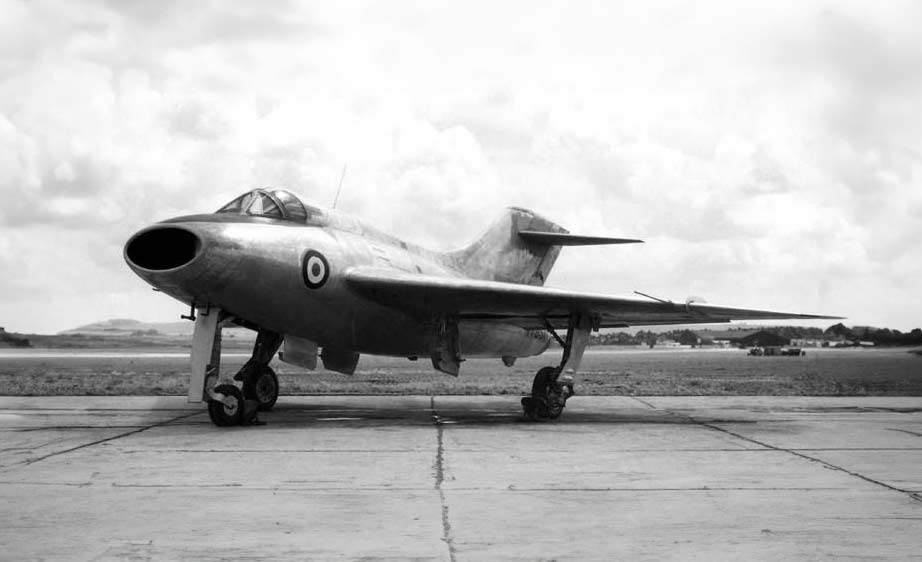The Boulton Paul P.120 was an experimental British jet designed for high-speed performance, featuring a delta wing and unique tailless design.
The Boulton Paul P.120 represents an intriguing chapter in aviation history, embodying the innovative spirit of the mid-20th century in aircraft design. It was a bold exploration into the potential of delta-wing aircraft.
History of the Development of the Boulton Paul P.120
The post-World War II era was a period of rapid advancement in aeronautical engineering, driven by the need to surpass the achievements of wartime technology and explore new frontiers in speed and design. The Boulton Paul P.120 was born out of this quest for innovation.
Developed by Boulton Paul Aircraft, the P.120 was conceived to investigate the potential of delta-wing designs in achieving superior high-speed performance. The project was initiated against the backdrop of the Cold War, where there was a pressing demand for advanced military aircraft capable of superior combat and flight characteristics.
Launched in the early 1950s, the Boulton Paul P.120 was a product of extensive research and development. It first took to the skies on [Date of First Flight], marking a significant milestone in British aviation. The aircraft did not have a NATO nickname, as it was primarily an experimental platform rather than an operational military aircraft.
Design of the Boulton Paul P.120
The P.120 was notable for its delta wing configuration, a design choice that was becoming increasingly popular for high-speed aircraft. This wing design offered several advantages, including a high lift-to-drag ratio and stability at high speeds.
In terms of dimensions, the P.120 was [Length in feet and meters] long with a wingspan of [Wingspan in feet and meters]. The aircraft’s airframe was constructed using advanced materials and techniques prevalent at the time, with a focus on balancing strength and weight.
One of the key challenges of the P.120’s design was achieving effective control and stability without traditional tail surfaces. This led to innovative solutions in aerodynamics and control systems.

Performance of the Boulton Paul P.120
The Boulton Paul P.120 was equipped with a Rolls-Royce Derwent 8 turbojet engine, known for its reliability and performance. This engine provided a thrust of approximately 3,500 pounds-force (15,569 Newtons). This powerful engine was a key element in the aircraft’s design, enabling it to reach high speeds and explore the boundaries of subsonic and supersonic flight.
The aircraft’s top speed was estimated to be around 600 miles per hour (965 kilometers per hour), positioning it among the faster aircraft of its time. Its operational ceiling, the maximum altitude at which it could fly effectively, was around 40,000 feet (12,192 meters). The range of the P.120 was approximately 500 miles (805 kilometers), a distance that was quite adequate for the short, high-speed missions it was designed for.
In comparison to contemporary aircraft of the 1950s, the performance of the P.120 was quite ambitious. It aimed to match or exceed the capabilities of existing fighters and experimental jets, which included renowned aircraft like the North American F-86 Sabre and the Soviet MiG-15. These aircraft were setting new standards in jet fighter performance, and the P.120’s design and capabilities were a British effort to keep pace with these advancements.
Military Use and Combat of the Boulton Paul P.120
As an experimental aircraft, the Boulton Paul P.120 was not armed and did not participate in any combat operations. It was primarily used for research and development purposes, contributing valuable data and insights into the capabilities and limitations of delta-wing aircraft.
The P.120’s role was to serve as a testbed for technologies and design principles that could be applied to future military aircraft. While it did not directly engage in military missions, the knowledge gained from its development and flight tests had implications for subsequent aircraft designs.
This aircraft was not sold to other countries and remained a unique prototype under the auspices of Boulton Paul Aircraft. Its operational life was confined to testing and research, after which it was superseded by more advanced designs in the rapidly evolving field of jet aircraft.
The Boulton Paul P.120 stands as a testament to the ingenuity and ambition of mid-20th-century aircraft design. While it did not achieve widespread fame or enter operational service, its contributions to the field of aeronautical engineering, particularly in the exploration of delta-wing aerodynamics, were significant. The lessons learned from the P.120’s development and testing have influenced generations of aircraft, leaving an indelible mark on the history of aviation.
Back to the experimental aircraft section.